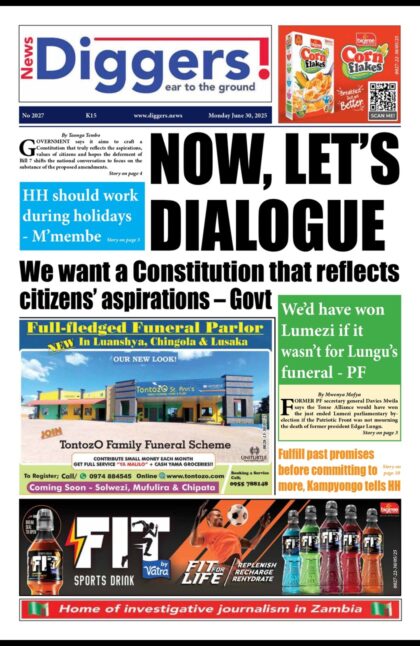NAPSA director general Yollard Kachinda says the US$4 million contingency amount that the authority had proposed to award Avic International for the development of River View Park project in Lusaka was applied to all the bidders who reached evaluation stage.
Last month, News Diggers! reported that a NAPSA evaluation committee for the named construction site recommended the awarding of a construction tender to AVIC at the “corrected bid sum of US $25,707,782.26” against the contractor’s offer to do the work at the bid sum of US $21.6 million.
The committee stated that the extra US $4 million, which was added to the bidding price, was meant to cater for contingencies and cost escalation as well as Value Added Tax (VAT).
The development triggered public anxiety, forcing ADD president Charles Milupi to demand answers from NAPSA, arguing that it was not for the evaluation committee to put in contingencies as contingencies were included by contractors in the bidding cost.
In their initial reaction, NAPSA, through its head of corporate affairs Cephas Sinyangwe said any aggrieved party questioning the awarding of the controversial tender to AVIC International for the construction of the Twin Palm River View Park should appeal using the laid down procedure.
He, however, failed to explain why the NAPSA committee wanted to inflate the cost.
Kachinda issued a statement, Monday, which is almost a month later, explaining that it was industry practice for the project owner to provide a contingency amount in order to cover any unexpected costs.
“The National Pensions Scheme Authority wishes to clarify to the general public and NAPSA members in particular over the misleading article that appeared in the News Diggers Newspaper of 19 June 2019 concerning the award of the tender for the development of infrastructure at River View Park in Lusaka at US$25,707,782.26. Following the authority’s earlier statement that the proper procurement procedure was followed in the award of the said tender, we wish to provide clarity on the matter surrounding the contingency amount. By way of background, NAPSA owns 600 Hectares of virgin land along Twin Palm Road in Lusaka known as “River View Park” for investment purposes. NAPSA has engaged external consultants to design and supervise construction of requisite base infrastructure that include road network, surface water drainages, bridge across Chalimbana river, sewerage, water, and electrical reticulation. The construction of the above stated infrastructure is intended to facilitate for the sale of serviced plots in order to pave way for development of residential, commercial and industrial facilities,” stated Kachinda.
“It is industry practice for the project owner to provide contingency amount in order to cover any unexpected costs that can arise during the execution of the project. Accordingly, the contingency amount is not meant to be paid to the contractor if there is no justifiable project scope changes approved by the project owner. The contingency amount is as such only utilised to the extent of certified value of necessary project scope changes. The contingency amount is dependent on the size and complexity of the project. In this case, the contingency amount was assessed at USD4 million based on the engineer’s estimate and the authority’s risk appetite. The amount was not disclosed to bidders at tender stage so that it did not influence bidders’ quoted amounts. Nonetheless, the contingency amount was applied to all the bids that reached commercial evaluation stage, hence did not disadvantage any bidder. This is standard practice and does not, therefore, amount to inflating the stated bidder’s amount as alleged in the article.”


















